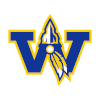Back trending/standard costing - an estimate of the historical original cost using a known average installed cost for alike units as of the estimated edition/acquisition date. This cost is only applied to the fixed assets initially counted upon implementation of the fixed assets management system when the historical original cost cannot be determined. It is inappropriate to apply the back trending/standard costing method to any fixed assets acquired after the fixed assets management system implementation date.
Balance sheet accounting/class codes - the codes set out for fixed assets in the Iowa Department of Education Uniform Accounting Manual. They are: 211-sites; 221-site improvements; 222-accumulated depreciation on site improvements; 23 1 -buildings and building improvements; 232-accumulated depreciation on buildings and building improvements; 241-machinery and equipment; 242-accumulated depreciation on machinery and equipment; and 25 1 -construction in progress.
Book value - the value of a fixed assets on the records of the school district, which can be the cost or, in the case of fixed assets in the proprietary fund, the costs less the appropriate allowances, such as a depreciation.
Buildings and building improvements - a fixed assets account reflecting the addition/acquisition cost of permanent structures owned or held by government and the improvements thereon.
Capital expenditures/expenses - expenditures/expenses resulting in the addition/acquisition of or addition/acquisition to the school district's general or proprietary fixed assets.
Capital fixed assets - fixed assets with a value of equal to or greater than ($ capitalization threshold) based on the historical cost.
Capitalization policy - the criteria used by a school district to determine which fixed assets will be reported as fixed assets on the school district's financial statements and records.
Capitalization threshold - dollar limit set for capitalizing fixed assets.
Capitalized interest - interest accrued and reported as part of the cost of the fixed assets during the construction phase in the capital project. The construction phase extends from the initiation of pre-construction activities until the time the asset is placed in service.
Contributed capital - the permanent fund capital of a proprietary fund. It is created when a residual equity transfer is received by proprietary fund; a general fixed assets is "transferred" to a proprietary fund; or a grant received is restricted to a capital acquisition or construction.
Cost – the amount of money or other consideration exchanged for goods or services.
Depreciation - expiration in the service of life of fixed assets, other than wasting assets, attributable to wear and tear, deterioration, action of the physical elements, inadequacy, and obsolescence. In accounting for depreciation, the cost of the fixed asset, less any salvage value, is prorated over the estimated service life of such an asset, and each period is charged with the portion of such cost.
Fixed assets - long-lived tangible assets obtained or controlled as a result of past transactions, events, or circumstances. Fixed assets include buildings, construction in progress, improvements other than facilities, land and machinery and equipment.
Fixtures - attachments to buildings that are not intended to be removed and cannot be removed without damage to the buildings. Those fixtures with the useful life presumed to be as long as that of the building itself or consider the part of the building. Other fixtures are classified as machinery and equipment.
General fixed assets - capital fixed assets that are not fixed assets of any fund, but of the governmental unit as a whole. Most of these fixed assets arise from the expenditure of the financial resources of governmental funds.
General fixed assets account group (GFAAG) - a self-balancing group of accounts established to account for fixed assets of the school district, not accounted for through specific proprietary funds.
Historical (acquisition) cost - the actual costs expended to place a fixed assets into service. For land and buildings, costs such as legal fees, recording fees, surveying fees, or detect fees, and similar fees are included in the historical cost. For machinery and equipment, costs such as freight and installation fees and similar fees are included in the historical cost.
Improvements other than buildings - attachments or annexation to land that are intended to remain so attached or annexed, such as sidewalks, trees, drives, tunnels, drains, and sewers. Sidewalks, curbing, sewers, and highways are sometimes referred to as "betterments", but the term "improvements" is preferred.
Investment in general fixed assets -an account in the GFAAG representing the school district's investment in general fixed assets. The balance in this account generally is subdivided according to the source of the monies that finance the fixed assets addition/acquisition, such as general fund revenues and special assessments.
Land and buildings - real property owned by the school district.
Machinery and equipment - fixed assets which maintain their identity when removed from the location and are not changed materially or consumed immediately (e.g., within one year) by use. Machinery and equipment is often divided into specific categories such as: transportation machinery and equipment which include school buses and school district owned automobiles, trucks and vans; other motor machinery and equipment which includes lawn maintenance machinery and equipment, tractors, motorized carts, maintenance machinery and equipment, etc.; other machinery and equipment which includes furniture and machinery and equipment contained in the buildings whose original cost is equal to or greater than ($ capitalization threshold), and fixed assets under capital leases and fixed assets being acquired under a lease/purchase agreement.
Proprietary fund fixed assets - capital fixed assets that are fixed assets specific to a proprietary fund, such as school nutrition fund or child care fund. Most often these fixed assets arise from the expenditure of financial resources of a proprietary fund.
Replacement cost - the amount of cash or other considerations required today to obtain the same fixed assets or its equivalent.
